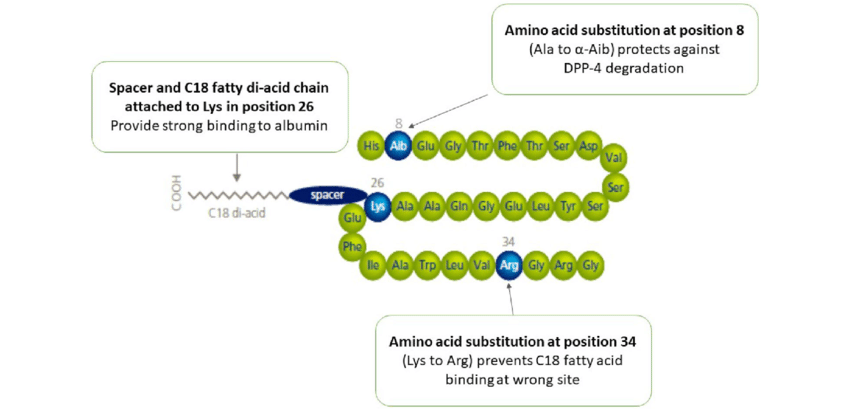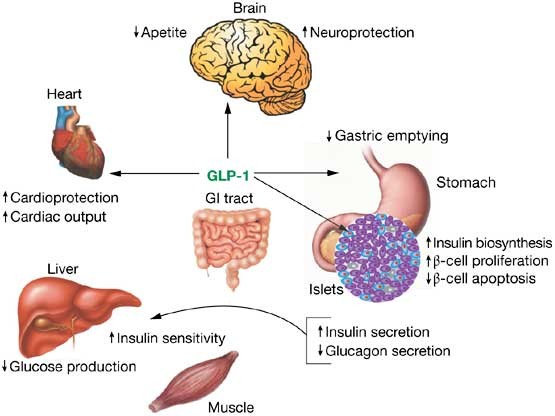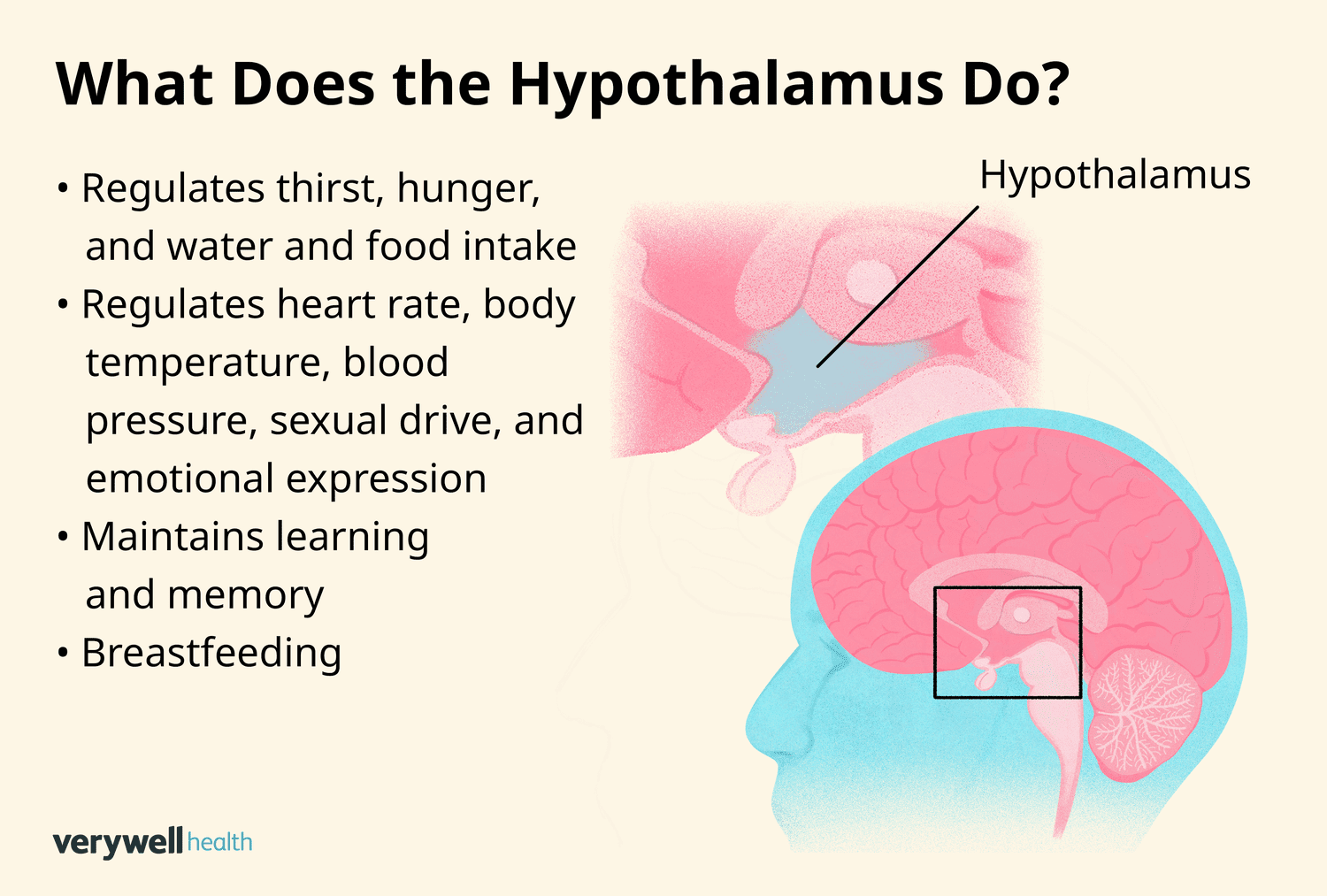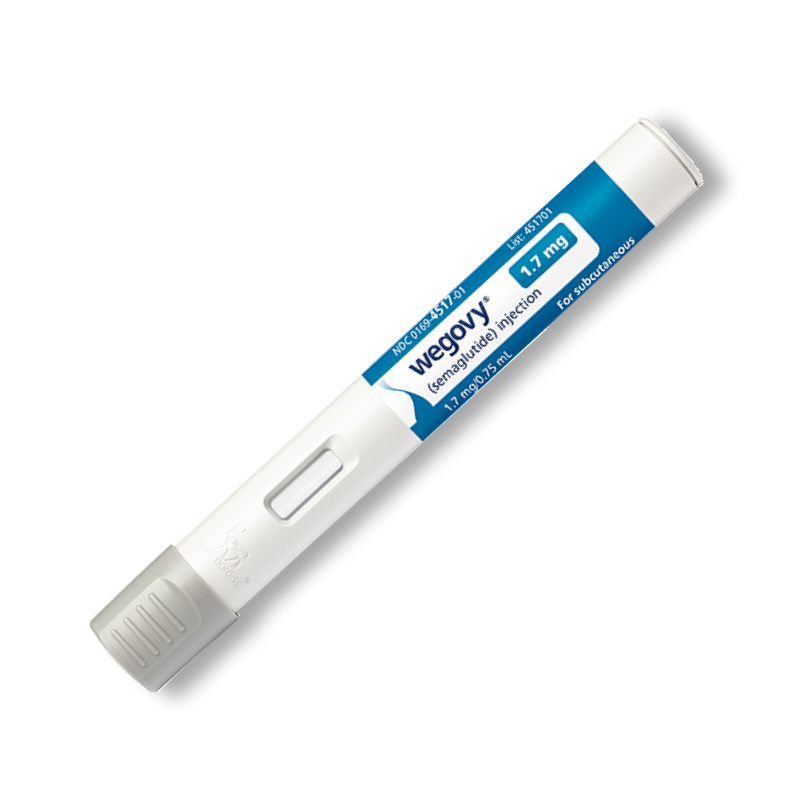INTRODUCTION
We all know good-hearted individuals that are struggling to lose bodyfat. You likely also know how addictive processed foods can be. I have written quite a bit about how important Exercise, Nutrition, and Recovery protocols are when addressing weight loss, or any health goals quite frankly. I continue to assert that these protocols are critical for maintaining health, but I also recognize some people are deeply addicted to processed foods and overeating.
ARTICLE LINK: Exploring Food Addiction
ARTICLE LINK: Exploring Hyperpalatability
ARTICLE LINK: Inactivity, Addictive Foods, and How They Drive Obesity
 Image From Ozempic
Image From Ozempic
ARE THERE OTHER SUPPORTIVE INTERVENTIONS?
You may have heard of Ozempic in the news and social media recently, and how it can help people manage insulin resistance and type 2 diabetes. It turns out that the “stuff” that makes up Ozempic also appears to help individuals lose fat. Keep reading.
 Image From ResearchGate
Image From ResearchGate
MORE ON THE “STUFF” THAT MAKES OZEMPIC
Ozempic is a brand, but the actual substance (or ingredient if you will) is called semaglutide (see the above pic). In fact, semaglutide falls under other names such as Wegovy and Rybelsus.1 Some of the differences between brands are below:
Ozempic: FDA-approved as an adjunct to diet and exercise to manage glucose levels (i.e., type 2 diabetes).1(2) Ozempic also helps reduce risk for cardiovascular disease, cardiovascular events, and non-fatal strokes.1(2) Ozempic is administered via injection.1(2)
Wegovy: is made from the same manufacturer as Ozempic, except it is administered (injection) at a higher dose.2 Wegovy, unlike Ozempic, is FDA-approved as an adjunct to a reduced calorie diet and physical activity for long-term weight loss management.1(2-3) The candidate must have a BMI of 27 kg/m2 or higher.1(3)
Rybelsus: FDA-approved as an adjunct to diet and exercise to manage glucose levels (i.e., type 2 diabetes), like Ozempic, except Rybelsus is administered orally.1(3)

Image From ScienceDirect
A LITTLE MORE ON SEMAGLUTIDE
Semaglutide (Ozempic/Wegovy/Rebelsus) is an analog (fancy way of describing a synthetic hormone that mimics the functions of the one that you make) of glucagon-like-peptide-1 (GLP-1)… You might be wondering why pharmaceutical companies are making something that already exists in your body?
Well, GLP-1 plays a very special role in regulating your blood glucose, fat metabolism, and many other roles.3 Those “other roles” include slowing down digestion (i.e., gastric emptying) and reducing your sense of hunger.3(1) From that, you might see why GLP-1 is so important, and why introducing an exogenous (from outside the body) form of GLP-1 (semaglutide) could be helpful for the appropriate candidate.
 Image From PubMed
Image From PubMed
MORE ON GLP-1 AND GLP-1 RECEPTORS
**This is the nerdy section**
GLP-1 is made in the intestinal cells (L-cells specifically), pancreatic cells, and cells of your nervous system (solitary tract specifically).3(2) Looking at GLP-1 at the pancreas is helpful though, because you will see how it can help you lose weight. I know there is a lot happening in the pic above, but I will do my best to explain.
From left to right, you are looking at your pancreas cells, which include the delta cell, beta cell, and alpha cells. You already know what GLP-1 is, but when you look closer you will also see GLP-1R (that is the receptor for GLP-1). GLP-1 and GLP-1R act like a lock and key, causing cells to initiate processes that keep you alive and healthy.
GLP-1Rs are in MANY organs and tissues in the body as well (a hint that GLP-1 is important).3(2) But at the pancreas level GLP-1 stimulates the release somatostatin in the delta cells (first cell in image above). Somatostatin is a hormone which increases insulin secretion (along with GLP-1) from beta cells (second cell above) that helps “pack away” glucose in the blood.3(9)
Insulin and somatostatin (along with GLP-1) also suppresses a hormone known as glucagon.3(2) Glucagon signals the liver to release more glucose in the bloodstream; not so great for diabetics if it is poorly controlled. Overall, GLP-1 plays a big role in managing blood sugar; you can probably see why Ozempic became popular treating diabetes and insulin resistance.
ARTICLE LINK: Hyperinsulinemia: An Early Warning to Type 2 Diabetes
 Image From TrueMeds
Image From TrueMeds
THATS GREAT. BUT I’M INTERESTED IN THE WEIGHT LOSS PART
GLP-1 does a few fascinating things to help you lose weight. Remember the somatostatin hormone released from the pancreas, which is stimulated by GLP-1? It just doesn’t help control blood glucose; somatostatin also slows down gastrointestinal activity.3(8)
Specifically, GLP-1/somatostatin reduces secretion of digestive enzymes from the pancreas (yes the pancreas is involved in more than regulating blood sugar) and reduces release of gastric acid from the stomach.3(8)
GLP-1 also interacts with the smooth muscles of the small intestines, slowing down their activity (aka peristalsis).3(9) You could imagine that food would stick around longer with less “things” around to break it down and move it along, helping keep you full for longer periods.
 Image From VeryWellHealth
Image From VeryWellHealth
GLP-1 also reduces food intake, as a consequence of reducing sensations of appetite.3(8)How does GLP-1 do this? It finds its way through the bloodstream and across the blood brain barrier. GLP-1 is even produced within the brain, and it acts on a region of the brain called the hypothalamus.3(8)
The hypothalamus plays a big role in responding to nutritional signals, and hormones like GLP-1.3(8) Once GLP-1 contacts receptors (GLP-1R) of the hypothalamus connected to specific neurons (nerves) that stimulate and promote sensations of satiety, known as CART/POMC neurons.3(9) Interestingly, GLP-1 also stimulates other hypothalamus neurons that slow down sensations of hunger (AgRP/NPY neurons).3(9)
 Image From LiveWell
Image From LiveWell
OK. HOW DOES SEMAGLUTIDE FIT IN?
GLP-1, as you can see, has profound effects on regulating hunger, digestion, and blood sugar. However, once GLP-1 is released in the body, it only sticks around for a few minutes (1.5-5 minutes).4 This may not be long enough to positively impact an overweight/obese individual.
This happens because an enzyme, called dipeptidyl peptidase 4 (DPP-4), quickly breaks down GLP-1, which reduces its function.3(8) However, semaglutide (remember, it is an analog of GLP-1) has been modified to withstand the “attacks” of DPP-4 for longer periods of time.3(5) Due to such modifications, semaglutide can maintain its effects for 165 hours (i.e., 6.9 days).6
This means that a semaglutide (like Wegovy), requires individuals to have a single injection of a GLP-1 agonist (another way of describing a synthetic substance that mimics the function of a naturally occurring one) once a week.1(9)
 Image From NeuGroup
Image From NeuGroup
THIS SOUNDS COMPELLING. BUT ARE THERE RISKS?
The answer is yes. Semaglutide injections have the potential to cause issues. Let’s have a look below:
- Medullary Thyroid Carcinoma (MTC)/Multiple Neoplasia Syndrome (MEN2): MEN2 is a genetic disorder (it is rare) that negatively impacts the adrenal, parathyroid, and thyroid glands, which can lead to cancer.6(7) 1-3 years of semaglutide use was associated with an increased risk of all types of thyroid cancers; therefore, its use is contraindicated in patients with a family, or personal, history of MTC or MEN2 syndrome.6(7)
- Pregnancy: clinical trial data is insufficient to conclude a definite association between pregnancy complications and semaglutide use.6(7) Sporadic cases have been noted however, and manufacturers of semaglutide have advised stopping use of the same 2 months prior to conception.6(7)
- Common Gastrointestinal Effects: semaglutide use has been known to induce abdominal cramps, constipation, diarrhea, vomiting, and nausea.6(8) One study involving a total of 803 participants indicated unfavorable gastrointestinal symptoms occurring in 41.97% of individuals receiving semaglutide.6(7) However, prevalence of constipation, diarrhea, nausea, and vomiting decreased over time with continued use.6(7)
- Residual Gastric Content (RGC): delayed gastric (stomach) emptying is a feature of semaglutide, previously outlined. However, Pillarisetti and Agrawal 6(8) noted that some cases of delayed stomach emptying was associated with bloating, nausea, and abdominal discomfort. Slowly increasing the dose of semaglutide was suggested by Pillarisetti and Agrawal 6(8) as a means of minimizing effects, amongst other interventions.
- Severe Gastrointestinal Effects: Pillarisetti and Agrawal6(9) indicated, via FDA adverse event reporting system, that there were severe adverse events associated with semaglutide within 1,778 reported GI cases (2.25%, or 40, of those individuals died) and 3,601 overall cases (2.83%, or 102 of those individuals died).6(9)
- Nonarteritic Anterior Ischemic Optic Neuropathy (NAION): an observational study (these have limitations) with 16,827 patients between 2017-2023 was conducted that included individuals using semaglutide and non GLP-1R agonists.6(9)Among those with type-2 diabetes (a risk factor upon itself for vision related issues), 8.9% of those individuals experienced NAION (a sudden injury where the optic nerve gets less blood flow) that were using semaglutide, while only 1.8% of type-2 diabetics experienced the same in the non-GLP-1R agonist group. 6(9)Among overweight/obese individuals using semaglutide, there was a 6.7% incidence of NAION while non GLP-1R agonist group overweight/obese individuals experienced 0.8% incidence of the same. 6(9)
- Diabetic Retinopathy (DR): DR is gradual damage to the retina from complications due to high blood sugar.6(9) In a trial outlined by Pillarisetti and Agrawal,6(9) semaglutide therapy was associated with DR, however it was not statistically significant. Pillarisetti and Agrawal,6(9) stated that a long-term clinical trial exploring semaglutide use and DR is underway and should conclude in 2027.
- Acute Pancreatitis (AP): generally, there is no strong association between AP and semaglutide use.6(10) Some case reports (hard to generalize outcomes) have indicated AP with GLP-1 agonist use, yet trials implementing semaglutide and placebos showed no incidence.6(10) Pillarisetti and Agrawal6(9) did suggest, however, that long-term use of semaglutide and potential AP should be considered and researched.
- Pulmonary Aspiration (stomach contents getting in your lungs): this issue is limited to patients undergoing surgery.6(10) Therefore, pre-screening (medication history, scanning stomach for contents) should minimize pulmonary aspiration.6(10)
- Acute Kidney Injury (AKI): semaglutide seems to help protect kidneys from AKI. However, individuals using semaglutide that are experiencing specific stages of chronic kidney disease should be closely monitored.6(10) This is particularly relevant if the patient also has digestive issues that cause dehydration (makes kidney problems worse).6(10)
- Acute Gallbladder Injury (AGI): Pillarisetti and Agrawal6(10) cited a meta-analysis of 76 randomized controlled trials (RCTs) with 103,371 patients. GLP-1 RA was found to be associated with increased incidence of gallbladder diseases, and those risks increased with higher doses of semaglutide.6(10) This suggests the potential connection between dose and duration of semaglutide use.

Image From McIsaacHealth
HOW DO I DECIDE WHAT TO DO?
First, make sure you cover the most important basics- Exercise/Nutrition/Recovery protocols. I have written extensively on how these three items support multiple health outcomes, including weight loss. Have a look on my blog…there are three major categories (Exercise/Nutrition/Recovery), and under those, click on “bodyfat/skin” to find articles related to weight loss.
If you seem to have challenges with your weight loss despite your best efforts, you might consider speaking with your family doctor regarding semaglutide (i.e., Wegovy) use. Semaglutide is a medication, and using it is a medical intervention, which requires a prescription and medical supervision.
You need to discuss the benefits, and risks, of semaglutide with your family doctor. You also need to consider where your health is likely to be without using this drug, and consider the risks of staying where you are (i.e., remaining obese/overweight with co-morbidities). Implementing semaglutide with a well-developed nutrition and strength training program could help you overcome the hole you are stuck in.
This is a lot to consider, but we are talking about your health and longevity after all. And that is absolutely worth your time and effort. I wish you the best in your health journey!
References
1. Kommu S, Whitfield P. Semaglutide. StatPearls. Treasure Island (FL): StatPearls Publishing; https://www.ncbi.nlm.nih.gov/books/NBK603723/. Updated February 11, 2024. Accessed April 15, 2025.
2. UC Davis Health Website. https://health.ucdavis.edu/blog/cultivating-health/ozempic-for-weight-loss-does-it-work-and-what-do-experts-recommend/2023/07#:~:text=Does%20Ozempic%20work%20for%20weight,back%20the%20weight%20you%20lost. Updated July 19, 2023. Accessed April 15, 2025.
3. Zheng Z, Zong Y, Ma Y, et al. Glucagon-like peptide-1 receptor: Mechanisms and advances in therapy.Signal Transduct Target Ther. 2024;9(1):234. doi:10.1038/s41392-024-01931-z.
4. Hui H, Farilla L, Merkel P, Perfetti R. The short half-life of glucagon-like peptide-1 in plasma does not reflect its long-lasting beneficial effects.Eur J Endocrinol. 2002;146(6):863-869. doi:10.1530/eje.0.1460863.
5. Collins L, Costello RA. Glucagon-Like Peptide-1 Receptor Agonists. StatPearls. Treasure Island (FL): StatPearls Publishing; https://www.ncbi.nlm.nih.gov/books/NBK551568/. Updated February 29, 2024. Accessed April 18, 2025.
6. Pillarisetti L, Agrawal DK. Semaglutide: Double-edged sword with risks and benefits.Arch Intern Med Res. 2025;8(1):1-13. doi:10.26502/aimr.0189.
-Michael McIsaac

